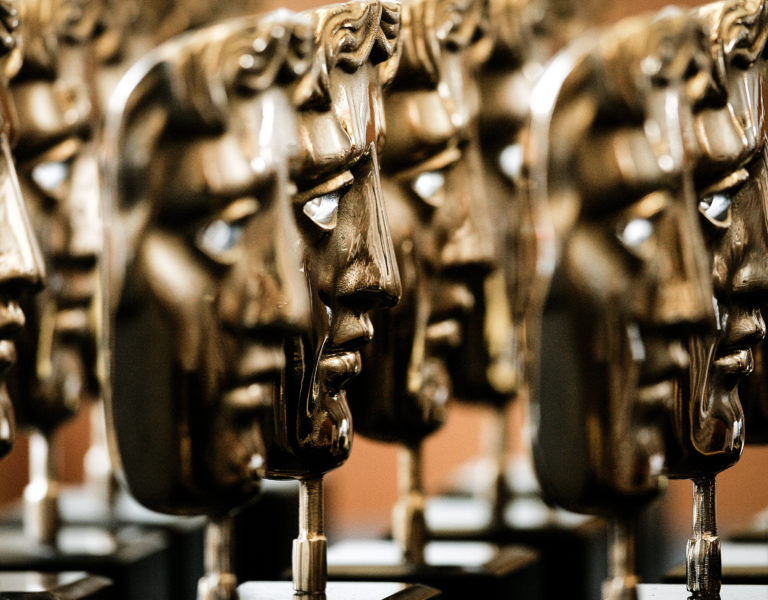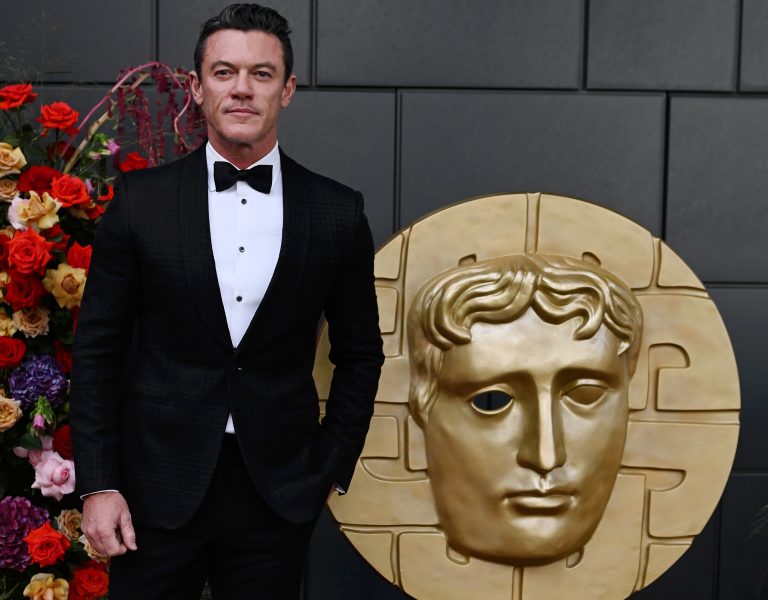It is perhaps no accident that after a year as tumultuous as 2023, Emmy and Oscar season(s) remain jumbled together. In normal times, the Emmys would be done by now, but Hollywood continues to experience its own version of William Faulkner’s dictum that the past isn’t really “past” at all – about which, more anon.
Which may also explain why two films released on the same summer weekend – Barbie and Oppenheimer – continue to dominate so much ofi the awards handicapping right now. Though if past is indeed prologue, so it is we morph once again into Award’ouevres mode over the winter season, spanning Winter Solstice to Oscar night, with some appetisers and after-dinner treats thrown in, by the time we’re once again all wrapped up.
Sometimes, though – as physics increasingly bears out – the present can also affect what came before. We had that in mind when we talked with Florian Hoffmeister BSC, about his work shooting HBO’s upcoming fourth instalment of its True Detective series. Hoffmeister, of course, was an Oscar (and BSC) nominee last year, for his work on Tár, and was even thanked backstage by eventual winner James Friend ASC BSC, who won for All Quiet on the Western Front, for being a mentor of his.
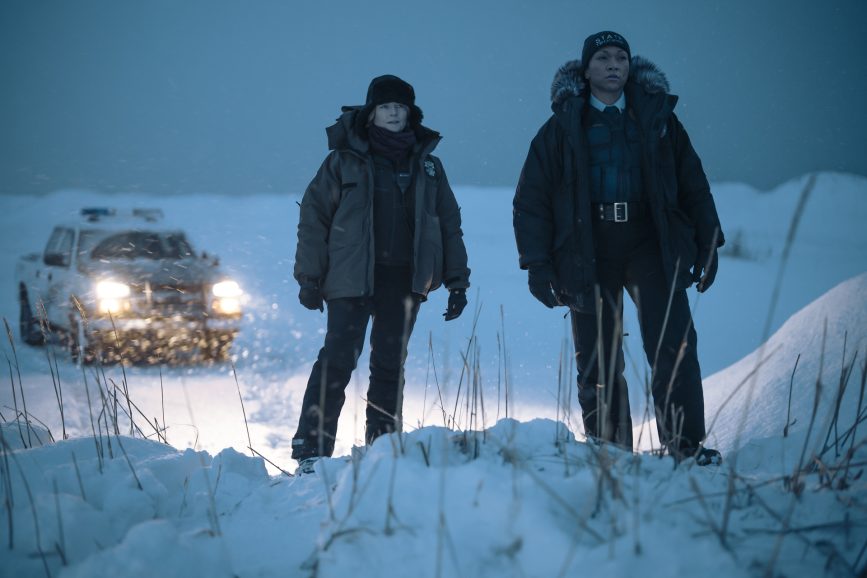
When we caught up with Hoffmeister – virtually – at his Berlin apartment, and mentioned Friend’s compliment to him, he reacted with surprise – not at the compliment, but that he simply hadn’t heard about it before. “I did hook him up with Edward,” he allowed, referring to the film’s director, and co-writer, Edward Berger.
As for this version of True Detective, it’s set in Alaska, but this time features two female leads– Jodie Foster, and relative newcomer Kali Reis, as the inevitably estranged partners, who must come together to solve one more murder case. Which, in true True Detective fashion, eventually connects to a harrowing, unsolved, previous one.
However, much is different in this iteration, not only because this version was created and (mostly) written by a female director, Issa Lopez, but because it also includes an even more unapologetic tilt toward the mystic than the first one. The series has also swapped out its usual warm weather climes for a much colder one, with Iceland doubling for the mythical Ennis, Alaska. And not only with the expected exterior locations, but studio interiors, too.
“We shot 112 days,” Hoffmeister said, which for him started some six months after wrapping Tár, and “a quarter of it was on stages,” including Iceland’s RVK Studios, and “a former industrial building we turned into a makeshift stage.”

Alaska itself would “prove too complicated, too expensive, and too far away,” but production designer Daniel Taylor visited to get design elements, and one in particular struck Hoffmeister, namely “if you live there and it’s dark all day – you have to switch on the lights all the time. People don’t [even] switch off their cars in front of the supermarket, to prevent them from freezing.”
This perpetual surrounding of artificial light, led to a lighting design “rooted in a sense of the utilitarian,” with a kind of “up and down of brightness and darkness,” especially as characters try to emulate “day” with the December “night” running for weeks on end, right outside their windows.
However, another profound influence wasn’t only the “DIY Daylight” that Alaskans live with, but one of cinema’s great snowbound horror classics – John Carpenter’s The Thing. Hoffmeister said that the film, and how Dean Cundey ASC shot it, likely affected his approach even more than previous versions of True Detective itself. “What I loved about (the film was) a certain roughness in the way it was shot,” along with, he adds, “elegance and style.”
That rough -to-elegant range was captured primarily with an ARRI 35, behind some “beautiful old Panavision glass,” though Hoffmeister is also quick to credit colourists, on both the “pre” and “post” side of shooting, starting with ARRI’s resident colour scientist, Florian Utsi Martin, who “built us a texture that worked with the [customised] LUT,” he’d created, and was further “burned in” to the camera.

Goldcrest, back in the UK, then “agreed to work […]with the LUT I gave them,” and graded the show. “It’s an interesting time in digital image manipulation,” Hoffmeister says. “People are waking up to the fact “that a LUT could be constructed by one entity and used by another.”
As for things being “used by an entity” in new ways (which was certainly one of the themes of The Thing, which also echoes through this series), that’s where the timing of this January release becomes interesting, and those aforementioned present-on-past “effects” kick in.
Long time award followers may recall that when Matthew McConaughey won his Best Acting Oscar for Dallas Buyers Club, the first True Detective, where he co-starred with Woody Harrelson, had been running on HBO, creating additional buzz about what was then dubbed the “McConaissance” given his plethora of complex roles at the time. He was even asked about the not-quite-concluded series in the media room at those same Oscars. And given that this new series is slated to start in January, it will be similarly interesting to see whether any buzz spills over to the award fortunes of Netflix’s Nyad, where Foster co-stars with Annette Bening as the eponymous, storied swimmer, Diana Nyad, with Foster as her coach.
Bening and Foster are already Golden Globe nominees, and True Detective is likely to keep a spotlight on them – certainly for Foster.
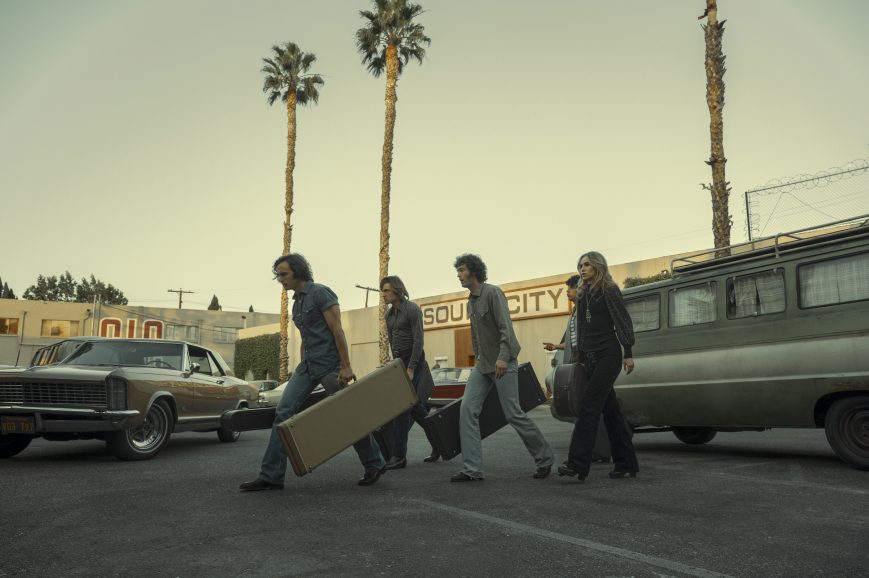
Of course, the same early January weekend with the Globes will now also feature the strike-delayed Creative Arts Emmys. That’s where the craft / animation / doc and guest star side of the awards will be given out ahead of the following week’s “above the line” Emmys where even more A-listers show up, along with the network TV cameras.
Straddling both those weekends is Daisy Jones and the Six, the Amazon series – based on the bestseller by Taylor Jenkins Reid – which has nine nominations in both above and below the line categories. It’s a ‘70s-set roman a clef – rock a clef? – about a very Fleetwood Mac-like band shooting to fame along LA’s Sunset Strip, only to inevitably break up, coming to artistic – and romantic – loggerheads. A few columns back we talked with lead DP Checco Varese ASC about helping to establish the show’s contemporaneous, before-there-were-cell-phones visual look.
This time around, we caught up with executive producer and series co-creator Scott Neustadter. “This has been my life for the last six years,” he said, mentioning that he’d always “thought the making of Fleetwood Mac’s Rumours would make a great show,” as fraught as it was with its own romantic and drug-fueled intrigues.

He got the chance when an advance copy of Reid’s book came his way and he “started reading it in the afternoon and flipped for it.” His wife, co-producer Lauren Levy Neustadter, had just started working with Reese Witherspoon’s company, which helped greenlight it, but he says, “they all thought about it as a movie – I didn’t know how to do it as a movie,” which is somewhat ironic, since Neustadter had an Oscar nomination as co-writer on 2018’s The Disaster Artist, which he also produced.
As for the “six years of his life,” a couple of those, at least, were spent during a certain recent pandemic, an event which allowed the actors “playing” band members to actually become them, spending the months while the production was shuttered, to keep rehearsing together. “It’s interesting how different the show would have been had they not had a year and a half to practice,” Neustadter says.
But by the time production resumed, “they also became a band,” replete with the inside jokes and camaraderie that go with it.
Of getting their story on “film,” or in this case, captured by a Sony Venice, Neustadter says of Varese (who shot six of the ten episodes, with Jeff Cutter doing the other four), the camera choices were affected by the creative decision to turn the book’s oral history format into a documentary (with the documentarian’s particular identity not revealed until near the end).
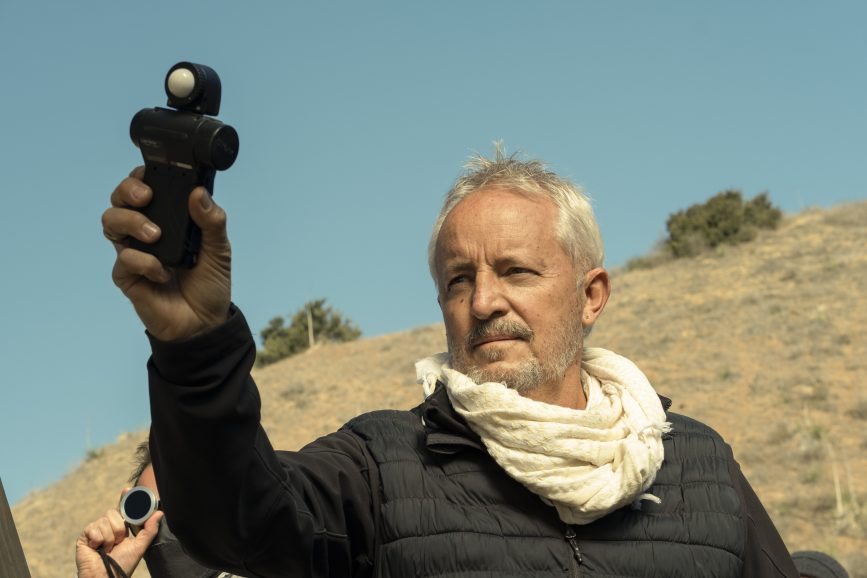
That also came with a decision to move the book’s reminiscences from “the present,” with its longer look back at the ‘70s, to the ‘90s, when the framing doc was being made. Which in turn meant that “Checco’s camera in the ‘70s would look extraordinary,” with all the “remembered” scenes playing out, “but the ‘90s camera would look worse,” if the recollections were being captured on a “prosumer” camera of the time.
So, while Varese told us earlier that while you also “don’t want to make it look like shit,” there are deliberate textural differences between the talking head footage and the “actual” story, with the former looking a little starker (though that ‘90s “present” gives way to a more omniscient view too, as the documentarian winds up becoming involved in the story’s conclusion).
The irony, then, is that while many other visual categories of the series were nominated – production design, costumes, and makeup – somewhat bafflingly, the cinematography was not.
But this won’t be the last time that the award process divvies up craft contributions in ways that won’t always make sense.
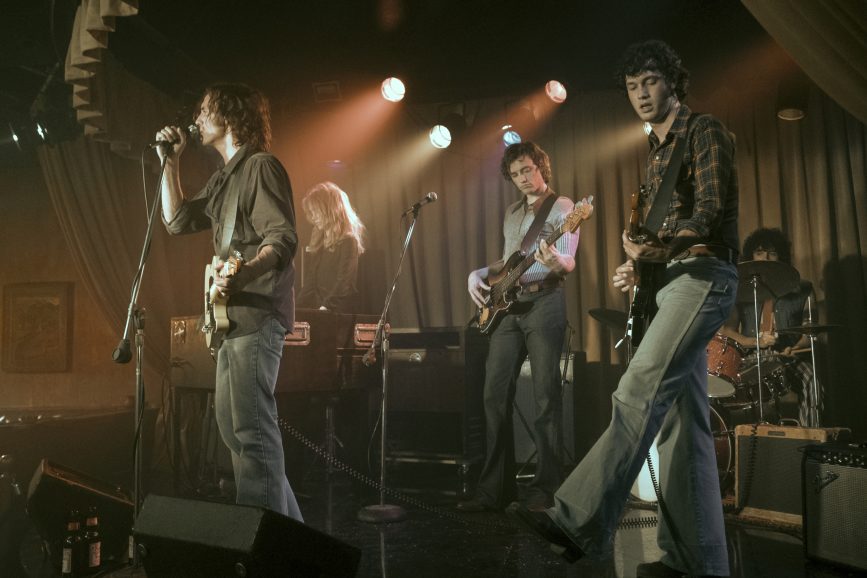
Meanwhile, though the more formal round of award ceremonies hasn’t quite begun yet, some of the early gatherings that mark the season have.
One was the HPA Awards – from the Hollywood Professional Association – which you can also read about here. Focused on post-production crafts, they honour their peers in categories that will crop up again later, such as editing, sound, and visual effects (on both the TV and film sides), and some that won’t, such as those for outstanding restoration (The Godfather won out over Casablanca!) and colour grading.
Held at the TV Academy for the first time, on what was a fairly balmy post-Thanksgiving evening, there was some considerable talk, especially among the honourees, inventors, and suppliers, about getting back to normal, post-strike, given that things hadn’t quite gotten back to normal – in terms of supply chains, rental house purchase of equipment, etc. – post-pandemic, before the strike even began.
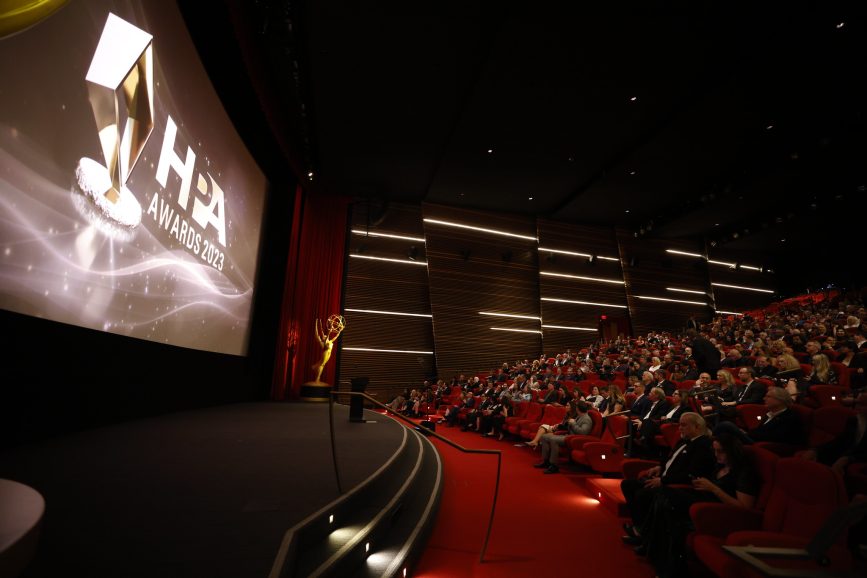

HPA’s broad window of eligibility had films like the aforementioned Tár competing against Oppenheimer and Barbie (Oppenheimer won, by the way, for both its colour grading and editing, which still feels like an a bit of an augury heading into award season proper), adding to the feeling that we’re all still trying to catch up with each other, while waiting for the considerable dust and detritus of recent times to settle.

It hasn’t, of course, and gives every appearance of not doing so for a very long while. Which, perhaps, adds a certain extra piquancy to events like the Women in Media’s annual Holiday Toast (a group, and event, which, they make clear, welcomes all genders, while seeking to expand opportunities for those who, in the past, have had a much harder time getting them in the first place).
Not so much an award – the honourees are all known in advance (and you can find them all here) – the gathering this year was held in the Sofitel in Beverly Hills, just down the road from the headquarters of several major talent agencies, and across the street from the Cedars Sinai Hospital complex – parameters which themselves demarcate many show business lives.
Inside, people seemed genuinely happy to see each other again. We spoke briefly with Bianca Halpern, the CEO and founder of Culver City-based Becine, “the only women-owned rental house” which includes not only testing rooms for cameras and glass, but the highly overdue addition of a kids’ room, and childcare, while working parents run those tests.

Halpern, echoing some of what we heard at the HPA Awards, mentioned simply the gratitude at having “survived the pandemic,” some six years after the company’s founding, and now finds work slowly returning, as Becine helps with the prepping of shows like The Lincoln Lawyer and The L Word.
We also caught up with Nancy Schrieber ASC, who sits on WiM’s advisory board. She gave us a bona fine cinematographers’ tip on where to place our camera (which is to say, “our phone”) when composing certain shots – one that we’ll be using in future event coverage.
Schrieber, a previous honouree herself, said that one thing that attracted her to WiM early on was when she first met founder Tema Staig, and was “excited she was focusing on women and below the line.” And the honourees all come from a hands-on production background.
As one of this year’s honourees, Emmy-winner, and cinematographer (and also USC instructor) Dianne Farrington said, part of the task is to inculcate a belief – one that worked on her own rise from Detroit-area news camera operator to eventual narrative DP – that one proceeds “not knowing you’re not supposed to be in the room.”
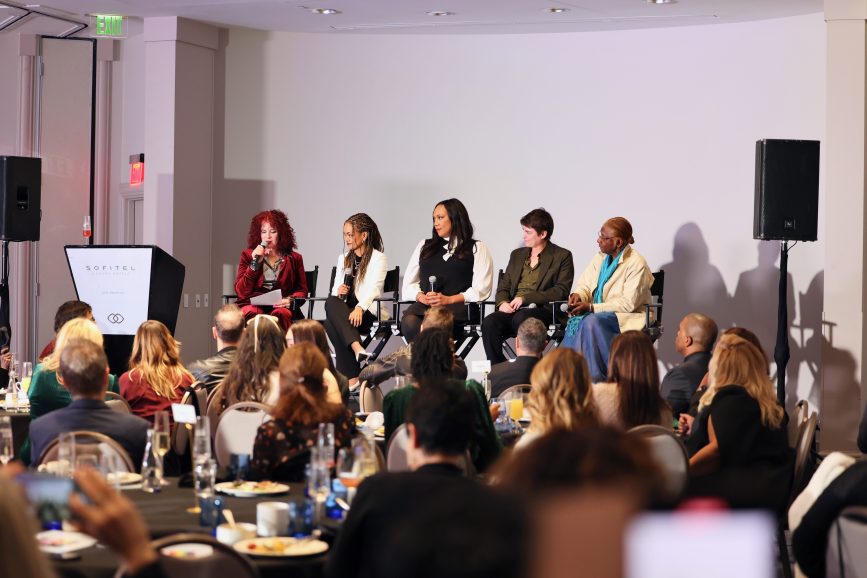
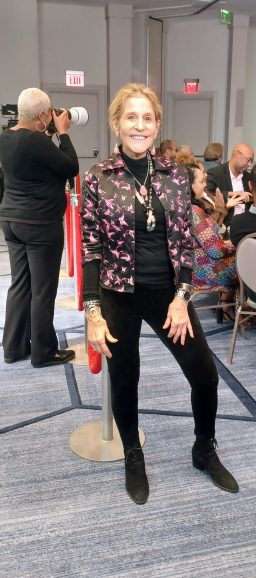
And who you are in that room is one of the main themes of one the year’s best pictures, American Fiction, starring Jeffrey Wright as an African-American novelist and college professor, whose fiction tends to be “too literary” for commercial success. When he sees the publishing industry responding to more stereotyped “life in the ‘hood” style narratives from other black authors, he writes one as a savage satire, containing just about every broken home / gangbanging trope the larger (and white-run) industry has come to expect.
He does it as kind of a savage poison pen farewell to publishing, but, needless to say, it’s the book that becomes his biggest, and most inadvertent, bestseller.
And speaking as someone who has actually managed to publish a few books along the way, its observations about that industry tend to be spot on.
We caught up with the film’s DP, Cristina Dunlap, for a chat. She was busy with a newborn arrival in the house while helping to publicise the film and her work on it.
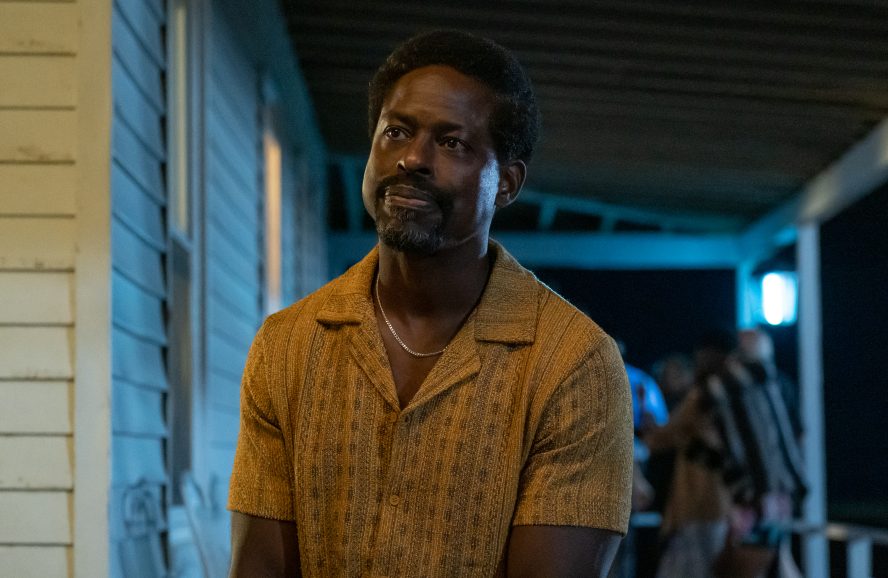
American Fiction is an example of the kind of film that will almost certainly get above the line accolades (Wright being on the shortlist for a best actor trophy), but whose craft contributions could be overlooked.
Dunlap came to the attention of director/writer Cord Jefferson (who adapted from Percival Everett’s, yes, novel), through a colleague who she’d worked with on music videos. “We ended up getting lunch [and] really hit it off.” And although Jefferson went on to interview other DPs, “he ended up coming back,” in part because of her lookbook, which suggested shooting parts of the film in different styles– romcom, action film, etc. – using visual movie tropes to mimic the recurring tropes that show up in mainstream fiction, and media in general.
To capture the differing styles – “bloomy” romcom imagery, “staccato” crane shots for the action scenes – she used an Alexa Mini LF, with Blackwing 7 lenses. “I knew we were leaning toward doing an anamorphic crop,” she says, as straight anamorphics “make you feel like you’re watching a movie.” Instead, they “shot spherical with [the] crop,” allowing for more interesting compositions, as well as an ability to “isolate Jeffrey in the shot.”

Which, again are craft contributions that amplify already strong above-the-line work.
Meanwhile, our award show coverage begins in earnest – belated Emmys and all – in our January dispatch, along with a chat with Martin Ruhe ASC on shooting George Clooney’s Christmas-debuting historical sports drama, The Boys in the Boat.
And thank you for supping your way all through this opening, multi-course Award’oeuvres and may the season unfold with a maximum of kindness, to you and yours, in a world that seems to all too vividly lacking it, right now.
–



